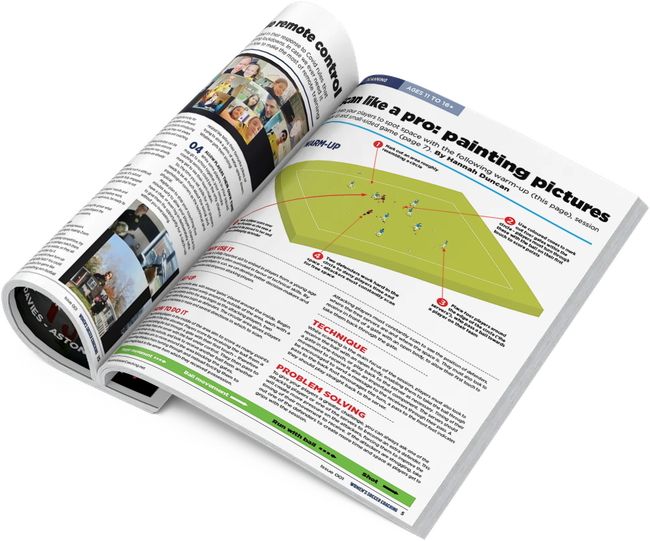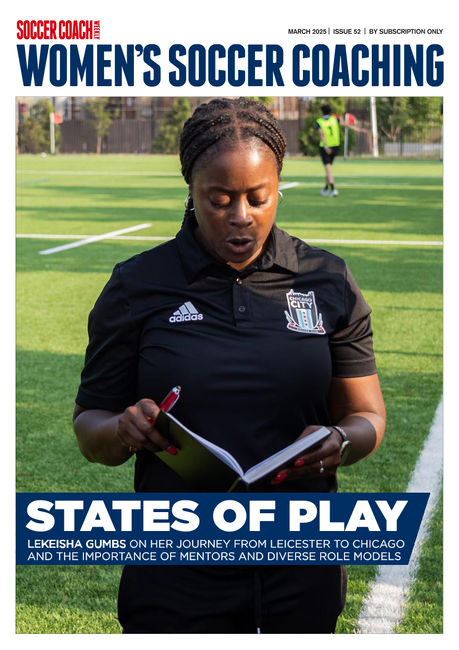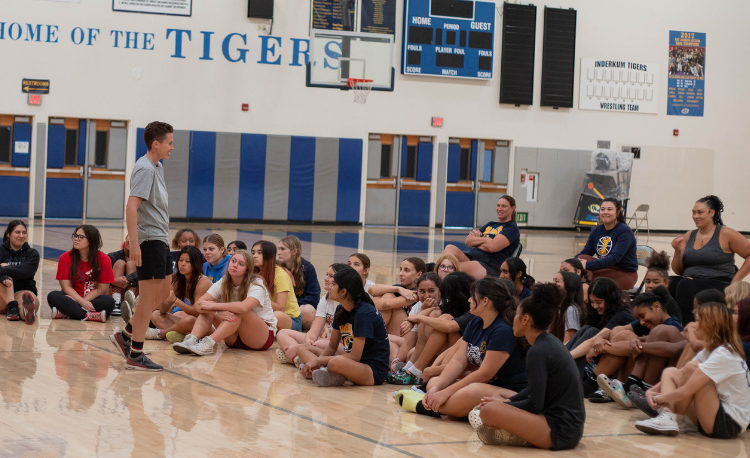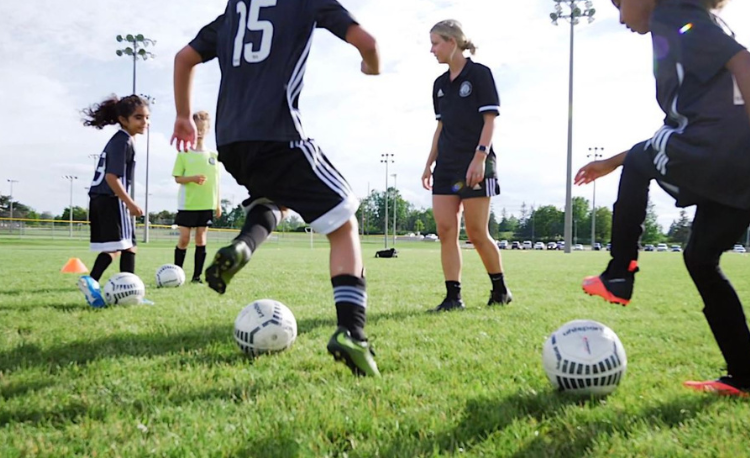You are viewing
1 of your 3 free articles
The importance of high ball-rolling time in your sessions
By limiting your interventions, and increasing ball-rolling time in your sessions, you will create more learning opportunities for your players, says Rob McKay.
It was the night of my Football Association Level 2 assessment, on a particularly cold and wet Manchester evening.
I gathered the players to brief them on their objectives, and carefully explained what I wanted from them, using the tactics board as a walkthrough. I then got them into position on the field and got the practice moving.
Conscious of the weather, I aimed to keep my interventions to a minimum, after I found myself stopping the practice early to go over the objectives of the session.
At the end of what I thought was a pretty good practice, my assessor came over. Expecting him to agree, they stunned me with one question: “What do you think your ball-rolling time was?”
Wracking my brains for an acceptable answer, I thought a safe bet was around 60-70% – in truth, I’d never considered ball-rolling time.
Although I’d stopped when required, to get my coaching points in, I thought I’d let them play long enough to offset the cold evening.
The answer? “50%.”
I was staggered; but what I had failed to consider was the amount of time it had taken to get the session going.
This was as important to get right, to set the tone of the session, as reducing stoppages within the session itself.
My takeaway from the evening was that I was responsible for players simply standing around for too long, achieving nothing.
Following my assessment (I eventually passed), I began to consider and refine the following four non-negotiables, to keep my ball-rolling time at around 80%, and keep the flow of the session moving.
The introduction
Can you start your session as quickly as possible?
It sounds obvious, but your players will be keen to get moving, so get them playing by providing as little information as possible, but as much as is necessary.
At the end of a long day of school, college or work, the players are not really there to listen to you.
It’s also important to avoid giving them solutions. This will allow players to play with a sense of discovery, and ensures the decision-making remains with them.
Providing the players with the answers risks them not creating their own solutions to problems.
Embrace the ’messy zone’
One of the pressures we often have is feeling judged on how our sessions look to others.
It’s easy for us to fall into the trap of wanting a session to look perfect from the first minute, and constantly intervening if it doesn’t.
However, if a session looks ’perfect’ from the outset, it’s likely that your session design is not challenging your players.
It’s important that, not only do we challenge our players, we also allow them time to adapt to the challenge set.
Embracing the ’messy zone’, and the players’ mistakes, as they adapt not only affords the players the chance to figure it out, but also provides you with the opportunity to identify some immediate coaching points.
Can we use this time to pinpoint both examples of good play and opportunities to provide our coaching points?
Creating the flow
Nothing disrupts the flow of the session like constant intervention.
At the beginning of the session, keep interventions to a minimum. We can use this time to modify the environment to provoke the desired outcome, but we should only intervene if absolutely necessary. If you’re intervening every time you witness a mistake, the flow you desire may never arrive.
Just as crucially, your players may become afraid to take risks for fear of making a mistake.
If it is too challenging, don’t be afraid to adjust and regress the practice. Likewise, if it’s not challenging enough, go to one of your progressions. Ideally, we want to keep the players in a state where it feels challenging, but achievable.

Intervention without interruption
You’ve got the players moving, and they’ve begun to create the flow: so, how can you maintain that?
There’s nothing worse for your players than getting into the session, only for the coach to interrupt. Once you’ve given your players their objective, they will just want to get on with it.
One way to achieve this is having a focus on concurrent coaching, and limiting your stoppages using pre-planned blocks of time, with built-in rest periods.
Additionally, once we have considered the number of our interventions, consider the length of them.
You don’t want to intervene for too long, overwhelm the players with too much information and have them lose focus or confidence.
Keeping your interventions to time-limited rest periods, built around the blocks of practice, will force you to limit your interventions and allow you to practice keeping your coaching points brief.
Consider timing the length of your interventions. I limit myself to 60 seconds for general practices, and 90 seconds for more position-specific ones.
This ensures you get your players back moving quickly.
Conclusion – let the ball roll
The Hull City Women’s manager, Chris Hames, once told me: “As long as they’re playing, they’re getting better at football, and it’s your interventions that accelerate that process”.
In short, it’s no bad thing for your players to play more football, and to be given the freedom to do so while you refine your coaching interventions.
Related Files
Newsletter Sign Up
Newsletter Sign Up
Discover the simple way to become a more effective, more successful soccer coach
In a recent survey 89% of subscribers said Women's Soccer Coaching makes them more confident, 91% said Women's Soccer Coaching makes them a more effective coach and 93% said Women's Soccer Coaching makes them more inspired.
*includes 3 coaching manuals
Get Inspired
All the latest techniques and approaches
Women's Soccer Coaching offers proven and easy to use soccer drills, coaching sessions, practice plans, small-sided games, warm-ups, training tips and advice.
We've been at the cutting edge of soccer coaching since we launched Soccer Coach Weekly in 2007, creating resources for the grassroots youth coach, following best practice from around the world and insights from the professional game.







